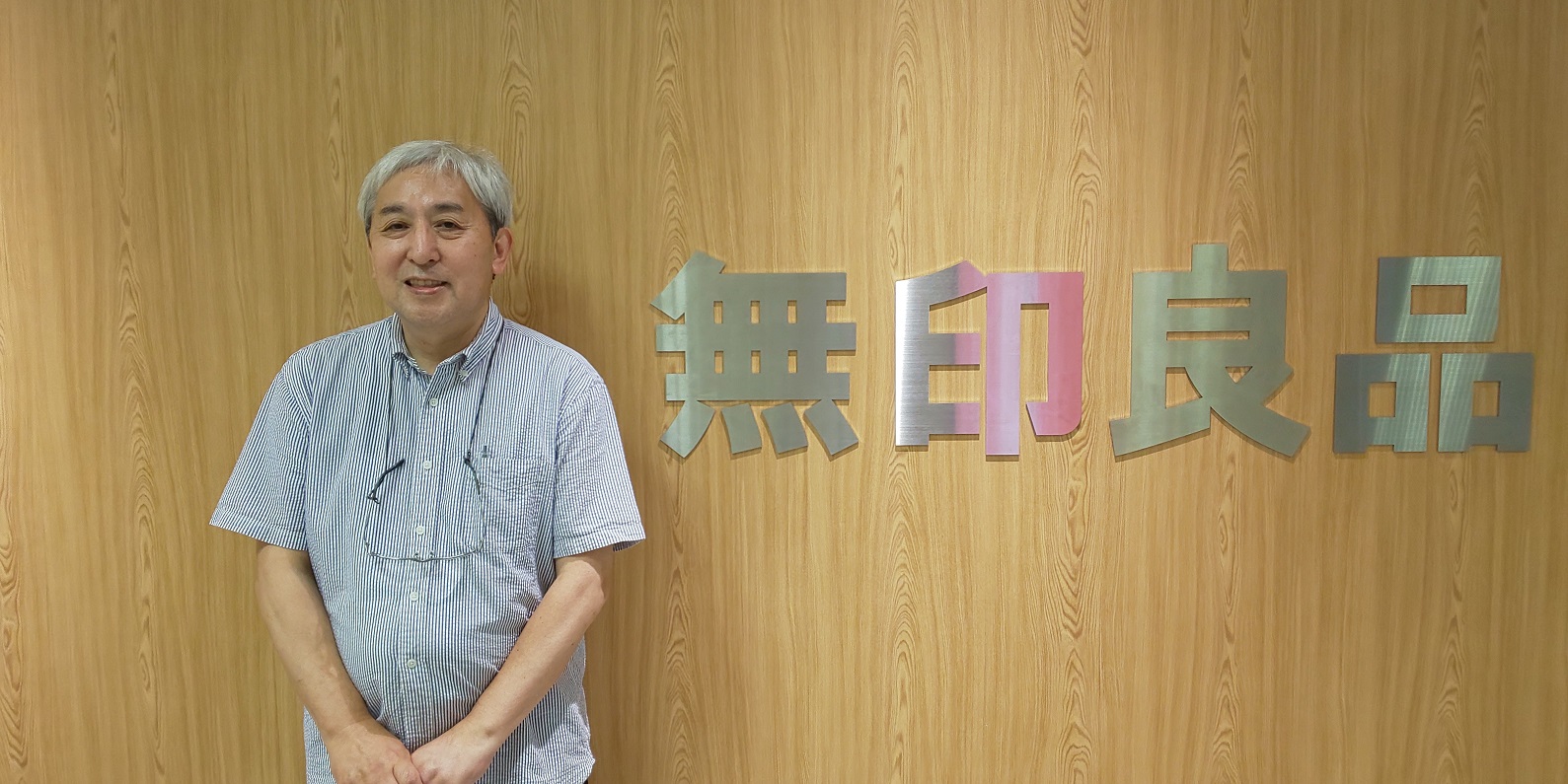
Mr. Keiichi Suzuki, Social Good Division
Mr. Suzuki, who is currently in charge of promoting initiatives in Hokkaido region, is engaged in activities to rebuild local ties mainly in the depopulated areas of Hokkaido, by organizing activities such as planting tours in cooperation with Yubari City Hall and promoting interactions with local high school students. We talked about the initiatives he has been working on as well as the things that he keeps in mind when conducting these activities.
■Past Experience
I joined MUJI in 1988 and have been working in various divisions such as the Store Sales Division and the MUJI Laboratory for Living. When it came to few years before my retirement, Mr. Kanai said to me, “how about doing something helpful to the people in the community where you were born and raised?” With this opportunity, I returned to Sapporo – which is my hometown – in 2013 and started activities such as talk events to introduce the charm of the local community. Since 2013, MUJI Sapporo Stella Place has been holding events three to four times a year.
As we continued these activities, we came up with the question of whether we could do anything to help develop Yubari City. Yubari City in Hokkaido, once flourished as a town of coal mines, has been in a difficult financial situation since the announcement of financial collapse in 2007. In 2017, Mr. Naomichi Suzuki, then Mayor of Yubari City, and others participated in a talk event at MUJI Sapporo Stella Place. In May 2018, MUJI hosted a bus tour for planting, which was associated with the movie “Kofuku no Kiiroi Hanasaku Machi (A Town Blooming with Yellow Flowers of Happiness) that featured Yubari as the stage. This event has continued to be held since then, and has become an opportunity for people living in the local community to think about their own issues, as well as to create connections.
■Interaction with high school students who will be the driving force of the future
At the end of July, I was invited as a lecturer for to give a speech on art design at Shikaoi High School in Kado County, Hokkaido for the course “Comprehensive Time for Searching.” Shikaoi High School actively conducts problem-solving classes to draw answers through active learning. In this class, high school students would discuss with key people in the local community about what they can do, compile solutions, and make a final presentation in January next year. In addition to myself, specialists in various fields such as tourism, sports, nursing and medical care also participate as lecturers to consider the future of the local community together with students of Shikaoi High School.
The facilitator of this class, principal Tawaraya, used to work in Okushiri High School. Okushiri Island is a small island on the Sea of Japan to the southwest of Hokkaido with a population of approximately 2,600. It is an island with many historical remains and artifacts of the Jomon Period. For isolated islands, however, the declining birthrate and the aging of society accelerate dramatically, as it becomes difficult to go on to school in the local community once schools get closed. The issue of how to make a school alive on one's own island is vital, and principal Tawaraya has been making efforts keep the high school on Okushiri Island alive. In the course of our activities in Hokkaido, we got connected to principal Tawaraya and we have deepened our communications with Okushiri High School students through events such as “Community Market” or the introduction to Local Nippon initiatives – these connections contribute to me being invited as the lecturer.
Many young people, such as high school students and university students who will be the driving force of the future, want to do something about the region where they were born and raised. I believe that a vitalized area is characterized by a fusion of people who were originally living in the area and those who newly come to the area. I also believe that the community will gradually change, if we work with students who want to do something for the local community, come up with ideas and take actions together.
■Important points
This may apply to all the localization activities, but I believe that it is important to talk with various people in the community, visit them in person, and share issues and ideas with them. I use the words “people of the wind” and “people of the land” when I conduct initiatives to help revitalize the community. “People of the land” refers to the people who originally lived in the area, and “people of the wind” refers to those who come from other places or those who are connected with the locals. I believe that a new “climate” can be created when the wind and the soil blend together. MUJI alone will not be fully helpful the community. I believe that we should not only find people who come from the outside to do something new, instead, we should find out those local people who really want to do something for the sake of their own community, and to talk with students who will be the leaders of the future.
From September, I was appointed to be in charge of localization activities at MUJI Sapporo Parco. We hope to help revitalize the local communities through “Community Market” that connect local residents and customers, and to work with local governments and other companies to revitalize the community together with the young people in Hokkaido.

